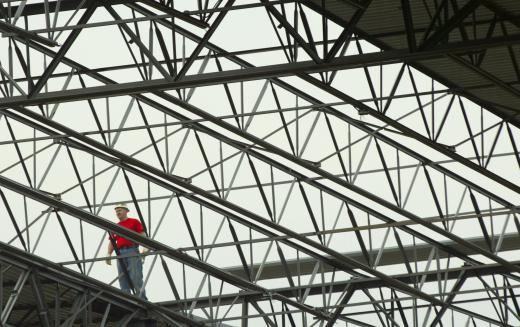A rafter table is a set of numbers used by carpenters to determine how to cut roofing rafters. In roof construction it is imperative that all angles and dimensions are cut correctly or the roof will be off kilter. If the dimension error is large enough, the rafters will not adequately support weight and could cave in when heavy snow or ice lands on the roof.
The rafter dimensions are normally printed on a steel square that is made into a right angle or 90 degrees. Similar in width to a conventional yardstick, it is typically only 24 inches (about 61 cm) long. Other names for this steel square are carpenter square, rafter square, or framing square.

In rafter design, the desired pitch of the roof is the first number one needs to determine in order to calculate rafter sizing. Roof pitch, or slope, on the rafter table is noted as the amount of rise over run. The rise is the vertical angle and run is the horizontal length. The run, or horizontal length, is always described in increments of 12 inches (about 30.5 cm).
The second element of rafter building using a rafter table is understanding span. Span is the length of space you are trying to cover with the roof. To calculate the span of the building, measurements are taken from the outside corner to corner. This measurement method will include the thickness of the building materials such as bricks, stucco, or wood.
Once the pitch and span are determined, carpenters consult the rafter table to determine how to cut the jack rafters. Jack rafters are the shorter pieces of wood used to support the main length of rafter. The final rafter is roughly shaped like a triangle; the jack rafters are attached to the inner part of the triangle at corresponding intervals. The jack rafters get shorter as they fan out from the center and end just before each end of the main rafter.
The final use a carpenter has for a rafter table is to calculate the bevel required for jack rafters. Since the jack rafters fan out inside the main rafter at an angle, each end must be beveled in order to fit properly. The carpenter places the rafter table on top of the jack rafter and draws a line across that is based on the printed measurements on the rafter table. This provides for the correct bevel that corresponds with the pitch and length of the main rafter.
